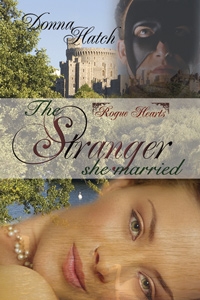
Hyde Park was THE place to see and be seen during Regency England. Regency ladies and gentlemen chose Hyde Park as favorite place to drive in open carriages or ride on horseback to show off clothing, or the latest rig, or horses.
The "fashionable hour" was, in fact three hours; from four thirty to seven thirty in the evening, though most ladies didn't appear until about half past five. By seven thirty, it was time to return to one's townhouse or lodgings and change into evening dress for dinner. The Ton, or members of the 2,000 aristocratic families at the height of English society, and social climbers trying to fit in, promenaded at Hyde Park, peacocking and flirting with others drawn to take part in the social rituals.
A brick wall enclosed Hyde Park in 1660 at the order of James Hamilton the Keeper of the Park under Charles II. The avenue fashionable for disporting oneself in Georgian Times was Rotten Row, a corruption of La Route du Roi. On Rotten Row one could be seen, flirt, greet friends, and show off beautiful driving clothes and equipage or mount. Gentlemen wearing the ankle length drab coat and yellow striped blue waistcoat of the Four-in-Hand club were sprinkled in the passing cavalcade.
Carriages bearing the painted and gilded family crests of the Ton and the living ornament of a dalmatian coach dog and liveried servants glide by in spotless splendor. The pair of footmen riding at the back of the coaches are as well matched as the teams of horses in their coloring and six-foot or better height. Among the carriages are those of courtesans bearing faux crests meant to remind them of the crests of their titled lovers.
C. J. Apperley writes of the fashionable hour in Hyde Park, "on any fine afternoon in the height of the London season…he will see a thousand well appointed equipages pass before him…Everything he sees is peculiar, the silent roll and easy motion of the London-built carriage, the style of the coachmen - it is hard to determine which shine brightest, the lace on their clothes, their own round faces, or flaxen wigs - the pipe-clayed reins - pipe-clayed lest they should spoil the clean white gloves…not forgetting the "spotted coach-dog, which has been washed for the occasion…such a blaze of splendor…is now to be seen nowhere but in London."
The movie An Ideal Husband shows a scene of a Victorian drive in Hyde Park, and many of my heroes and heroines go driving or riding in Hyde Park.








